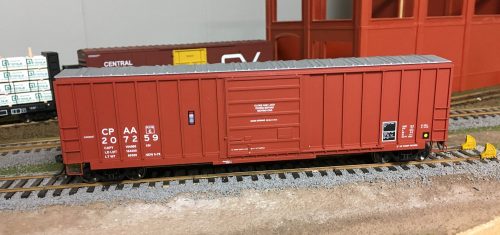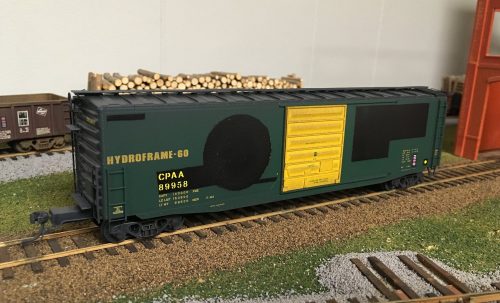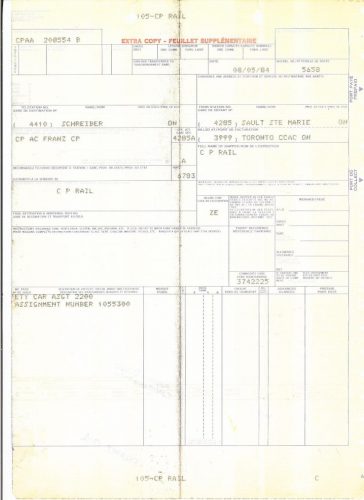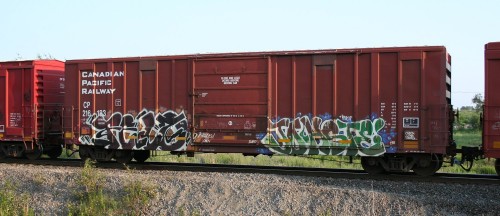
A number of years back, Athearn came out with a model of a 50′ SIECO boxcar in their “Genesis” line of ready-to-run rolling stock models. Amongst some of the flashier US Class I and shortline schemes, one of the paint scheme offerings on this model was a spartan brown scheme with Canadian Pacific’s CPAA reporting marks.
Naturally I snapped up a half dozen of these, as plain boxcars with CPAA markings are absolutely just the thing for any 1970s-1990s Canadian model railway, especially one with significant interchange of woodpulp via the CPR. (And I got them for a relatively decent price, since many model railroaders like the flashy cars and don’t really pay attention to what actually runs out there…)
Unfortunately, after I actually started comparing the cars to prototype photos, it became clear that Athearn actually made a huge miss with these cars. The colour is rather dark, compared to photos and compared to an Atlas ACF “Precision Design” car offered in a similar scheme (but done right!), although with weathering, this variation in the cars could be worked out. However the truly nagging failure is in the lettering – and just about everything about the lettering. It’s almost as if Athearn took the description “brown car with spartan lettering” and just ran with it, without consulting photos (or the one photo they used was a really unusual, non-standard repaint…). The font isn’t remotely close, the car number is squished into two panels instead of three, and any sort of dimensional data on the right hand side of the car is completely absent.
So…. into the alcohol bath went a pair of these cars to get stripped and repainted. The lettering was pieced together from bits and pieces of various MicroScale and Highball Graphics sets. The main reporting marks and numbers specifically came from Highball’s “Transport Gothic” alphabet set, which is fairly close match to the font on the real car. ACI labels, U-1 wheel inspection dots and COTS stencils from MicroScale accesory sets round out the car lettering. The photo below is the pre-weathering result, while the photo at the top of this post shows the original out-of-the box appearance of one of this car’s sisters.

Weathering still needs to be applied, and so far I’ve completed two of these cars, sold off another two at a train show, and still have two more cars of my original six in original factory paint that I haven’t entirely decided what to do with yet – repaint as two more CPAA cars; repaint as some other spartan IPD/pool car, or sell on the train show circuit.








